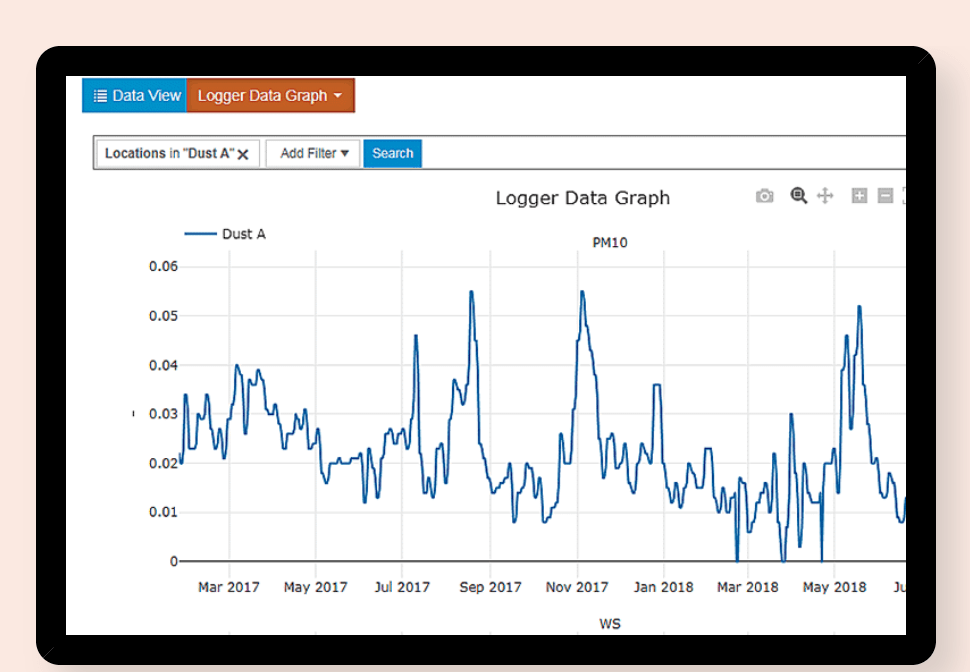A data logger is a data acquisition system that records digital data over time. They typically have sensors that measure various environmental conditions and a data storage device to save the data.
Data loggers are used in various applications, such as monitoring soil moisture levels, recording water quality data, and measuring the air temperature. They usually have an internal memory that can store data for weeks or months.
Data logging is used in various industrial, scientific, medical and weather monitoring applications. Some data loggers interface with computers, while others have built-in displays for standalone operation.
What types of data does a data logger collect?
The types of data a data logger collects include:
- Temperature
- Humidity
- Light
- Pressure
- Sound
- Motion
Who uses data loggers?
- Scientists
- Researchers
- Environmentalists
- Weather forecasters
- Geologists
- Engineers
Why do scientists use data loggers?
Every scientific study requires data to produce accurate results. This data can be collected in many ways, but scientists often use data loggers to track changes over time. Data loggers measure and record environmental conditions like temperature, humidity, and light levels. They can also be used to track the movements of animals or the growth of plants.
Data loggers are an essential tool for scientists because they allow us to gather large amounts of accurate data quickly and easily. They can be left in place for long periods, so we can track changes that happen slowly over days, weeks, or even years. This is especially important in studies of climate change or wildlife populations, where we need to see how conditions or numbers have changed over a long time.
Why do geologists use data loggers?
Geologists use data loggers to measure and record data over time. Data loggers measure various environmental parameters, including temperature, humidity, light, pressure, and wind speed. Data loggers are essential for geologists because they allow us to collect data over long periods, which is crucial to understanding how the Earth’s systems work.
Data loggers are used in various settings, from monitoring glaciers in Antarctica to measuring soil moisture in agricultural fields. Geologists use data loggers to study processes that occur over long time scales, such as the formation of mountains or the movement of tectonic plates. Data loggers are also used in engineering applications, such as monitoring the performance of bridges or dams.
Data loggers have many advantages over other types of data-collection devices.
Why do Weather forecasters use data logging?
Forecasting the weather is a complex and challenging task requiring access to much data. This data can come from many different sources, but one of the most important is data loggers. Data loggers measure and record various environmental parameters over time, such as temperature, humidity, and wind speed.
There are many reasons why weather forecasters use data loggers. One reason is that they provide a long-term record of environmental conditions. This is important because weather patterns can vary significantly daily and even hour to hour. By having a long-term record of conditions, forecasters can better identify trends and make more accurate predictions.
Another reason why data loggers are so important is that they allow forecasters to collect data from remote locations.
How do you manage electronic data over time?
As technology advances, the volume and types of data businesses generate exponentially increase. At the same time, customer expectations for data accessibility and accuracy are higher than ever. So how do you manage data over time in a way that meets both current and future needs?
One key to managing data over time is to have a centralized repository where all data can be stored and accessed. This repository should be designed to handle different types of data (structured, unstructured, etc.) and be scalable so that it can grow as your business grows.
Another critical aspect of managing data over time is governance. A set of policies and procedures will help ensure that your data is consistent, accurate, and compliant with regulations. And finally, don’t forget about security! As your data grows in value, so does the risk of unauthorized access or theft.
How do you manage environmental data over time?
Environmental data management is acquiring, storing, organizing, and maintaining data. It is a critical part of any organization, especially regarding environmental data. There are many factors to consider when managing data over time, such as data storage capacity, backup procedures, and access control.
Data storage capacity is an important consideration when managing data over time. As data sets grow larger, they require more storage space. Backups are also crucial for preserving data over time. Data should be backed up regularly to prevent loss in a system failure or other disaster. Access control is another essential aspect of data management. Organizations should carefully control who has access to their data sets to prevent unauthorized changes or deletions.
Data management is a complex task, but it is essential for preserving environmental data over time.
Types of data loggers and their alternatives
Data loggers collect data over time. They are often used in scientific and industrial applications where data needs to be collected over a period of time. Many different types of data loggers are available on the market, each with its own features and benefits.
One type of logger is the wireless data logger. Wireless data loggers offer several advantages over traditional data loggers. They are easier to install and can be placed in difficult-to-reach locations. Wireless data loggers also allow for real-time monitoring of data, which can be valuable in some applications.
Another type of logger is the web-based data logger. Web-based data loggers offer the advantage of accessing data from anywhere in the world with an Internet connection.
Environmental data management of data logger data
As the use of data logger instruments for monitoring environmental variables increases, so does the volume of data that needs to be managed. An effective data management system is essential for ensuring that data is available when required and can be used to answer scientific questions.
There are several factors to consider when designing a data management system for data logger data. The first is how the data will be stored over time. Data logger instruments typically record data at regular intervals, so it is essential to consider how this data will be stored so that it can be accessed later.
The second factor to consider is how the data will be accessed and used. Data logger instruments often generate large amounts of data, so it is essential to consider how scientists will access and use this data. One way to do this is to create a database that can be used to store and query the data.
What are the advantages of Data loggers over other types of data-collection devices?
Data loggers have several advantages over other types of data-collection devices. They can collect data over time, which can be used to track trends and patterns. Additionally, data loggers are typically more accurate than other devices, and they can be used in a variety of different settings.
Reviewing logger data with ESdat, environmental data management software

ESdat, data management software, reviews logger data in real-time, visualizes trends with graphs and quickly flags problematic data if needed.
ESdat is set up to capture live data from all major data logger manufacturers.
Connect ESdat with field instruments to capture ongoing data, such as weather, dust, water level, and water quality data loggers and sensors. Features of ESdat include:
- Automatically upload results from data loggers to ESdat via secure FTP.
- Automated data validation during import.
- Receive notifications and alerts to review your live data.
- Visualize measurements in time-series graphs.
ESdat is an intuitive and user-friendly software that helps environmental professionals manage a wide range of data. ESdat accepts and compiles data from laboratories, field programs, data loggers, sensors, historical sources, and environmental standards. All in one place.
Related Articles
Related Articles
- How can an environmental data management solution help your business?
- What is an environmental data management specialist?
- What data types are used in environmental data management?
- KaizenLAB laboratory integration with ESdat Environmental Data Management Software.
- Environmental data management software for mining: reducing environmental impact
- What is a bore log?
- Geotechnical Borehole Logging and Software






